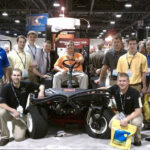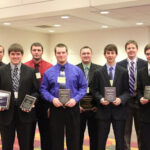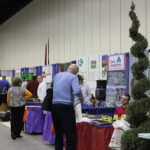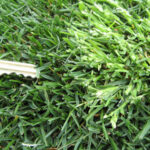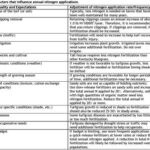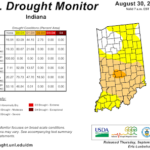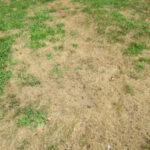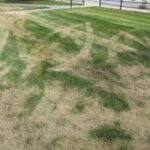Turf Tips Archives
Purdue Students Place 1st at the Eighth Annual Sports Turf Competition
For the second year in a row the Purdue Turf Program has placed 1st in the Student Challenge Exam during the Sports Turf Managers Association (STMA) Meetings held January 10-14, 2012. Eight students traveled out to Long Beach, CA for the eighth annual Student Challenge Exam at the STMA Meetings. The four person team of […]
Purdue Turf Scholarship Winners
The Purdue Turf Program granted over $15,000 in scholarship funds to nineteen students. These students have shown high academic achievement, outstanding character and a desire to be in the Turfgrass Industry. Congratulations to all of the Purdue Turf students that received scholarships. Chad Melton, Don Fassnacht Scholarship C.J. Coy, Jean and Lee Schmidt […]
Successful Indiana Green Expo
Last week (January 11-13, 2012) the Purdue Turf Program and the Midwest Regional Turf Foundation hosted the Indiana Green Expo (IGE) in cooperation with the Indiana Nursery and Landscape Association. The IGE is Indiana’s most comprehensive green industry educational conference and trade show. It is a time of education, new products and networking with industry […]
Still time left to sign up for Indiana Green Expo to be held Jan 11-13!
The registration deadline is fast-approaching for the Indiana Green Expo and forms must be postmarked by Dec. 31, 2011. The Indiana Green Expo is the largest turf, ornamental, nursery, and landscape conference in Indiana and is jointly sponsored by the Midwest Regional Turf Foundation and Indiana Nursery and Landscape Association. Over sixty experts from across […]
Winter Annual Weeds
Four types of broadleaf weeds exist: 1) perennial (those living more than two years), biennial (those living two years), 3) summer annuals (those germinating in the spring and dying in the fall), and 4) winter annuals (those germinating in the fall and surviving the winter and dying the following spring). Since many of these winter […]
Imprelis Return and Refund Program
On October 17, DuPont began a process to recall and refund Imprelis from Turf professionals. DuPont has contacted distributors, who will be coordinating with turf professionals to ensure that all remaining full and partially full bottles of Imprelis® are returned. Turf professionals have 10 business days to return all Imprelis® product (4.5 fl. oz., 1.0 […]
Grass Clippings and Herbicides
I have received a few questions recently regarding the use of grass clippings on lawns treated with herbicides. Here is one of those questions: “Our Master Gardener Association will be working on a project in which they hope to use a great amount of lawn clippings to put down as compost in a large area. […]
Imprelis Update: DuPont Begins Claims Resolution Process
On September 6, DuPont began a process to fairly resolve claims for impact on trees that DuPont™ Imprelis® herbicide may have caused. Below are links to documents useful to turf professionals who applied Imprelis® last fall or this spring. More information is available at http://www.imprelis-facts.com/ and at (866) 796-4783. The deadline for submission of claims […]
Purdue Turf Scientists and Their Work Highlighted in Recent Press Releases
Scientists make turfgrass safer for animals, deadly for insects September 6, 2011 WEST LAFAYETTE, Ind. – The right combination of compounds produced by a beneficial fungus could lead to grasses that require fewer pesticides and are safer for wildlife and grazing animals, according to Purdue University scientists. Read More Purdue ‘tool box’ could be […]
Making Adjustments to Your Fertilizer Program
Although the Purdue University Turf Program publishes information about how to fertilize your turf with nitrogen (N)-based fertilizers including standard rates and timings, there are many factors that influence these rates and timings. It is important that each turf area be fertilized according to its needs. For example, some areas require more nitrogen fertilization because […]
Fall Fertilization
Cool-season turfgrass species should be fertilized mainly in the autumn. September and November are the two best times to fertilize a lawn in Indiana. Fall nitrogen promotes good root development, enhances storage of energy reserves, and extends color retention in cool-season lawns. Most of the benefits from late fall nitrogen will be seen next spring […]
Staying Dry
Many in central Indiana are coping again with drought a second year (See drought monitor images for Indiana (current and fall of 2010). While many pockets of Indiana have had sufficient moisture in the second half of summer (including Lafayette) others are facing dry conditions for a second year in a row. September […]
Dr. Cale Bigelow Sabbatical
Just a quick note from across the pond. I will be on study-leave/sabbatical for fall semester from 15 Aug. – 31 December, 2011. I will be collaborating with colleagues interested in urban ecology and studying alternative low input turfgrass systems in Europe (primarily the United Kingdom). Please note that during this time I will have […]
Imprelis® Update: Stop Sale, Use, or Removal Order. Q&A
The following post provides an update on Imprelis® herbicide in a Question and Answer format. Q: What action has the Office of Indiana State Chemist (OISC) recently taken concerning Imprelis®? A: The OISC issued a stop sale, use, or removal order (SSURO) on August 1, 2011 for the herbicide Imprelis®. The OISC has reason to […]
Turf: Dead or Alive?
Many areas in Indiana have received recent rains to their lawns. Some lawns have greened-up and others are still brown leaving many wondering whether their lawns are dead or alive. Below are some images that illustrate the process of determining whether or not your lawn is dead or alive. Step 1. In an area of […]
Certainty Turf Herbicide Label Changes
Monsanto recently updated the Certainty® Turf Herbicide label 2011-1 on packaged goods. These changes are effective on product packaged and shipped after May 2011. All cool season turfgrass uses for Certainty have been removed from the 2011-1 label. The product can still be used on warm-season turf. The label change also adds nursery and landscape […]
DuPont launches www.imprelis-facts.com Website
This week DuPont launched a new website designed to help answer questions from those who have used Imprelis® and are seeing injury to trees. The website, www.imprelis-facts.com, states the following: “As a precaution until we are able to more fully understand the circumstances surrounding reports of tree damage related to Imprelis®, do not apply Imprelis® […]
Water Restrictions and Managing Turf During Drought
For those in the Indianapolis area, customers of the Department of Waterworks – City of Indianapolis are “asking residential and business customers to not water lawns through Friday, July 29 in the wake of continued lack of rain, high heat, and high water consumption”. The request is voluntary – initially requested on Wednesday, July 20 […]
Imprelis UPDATE and INFORMATION
Many Indiana turf professionals who used the herbicide Imprelis® in the fall of 2010 or spring of 2011 and now are reporting off-target damage to trees and ornamentals in the landscape. Additionally, many homeowners have read an article or seen a news story about a Imprelis®. Below are links for homeowners and for turf professionals […]
